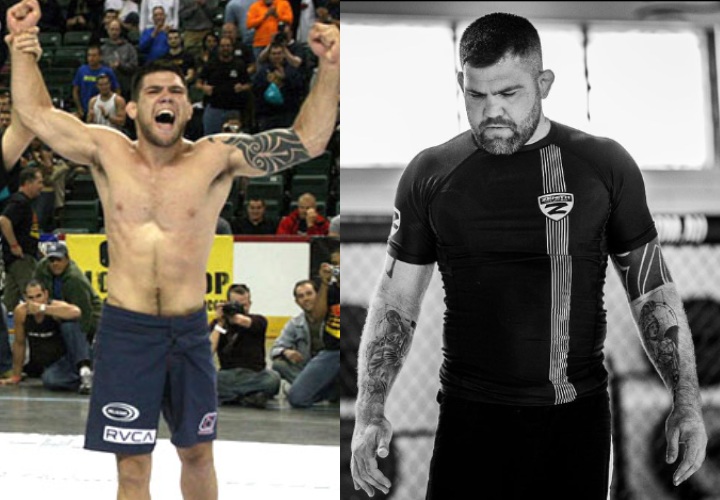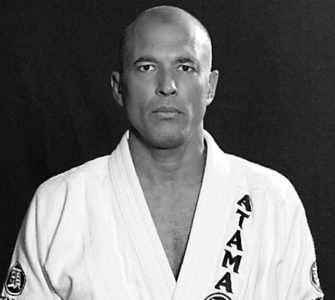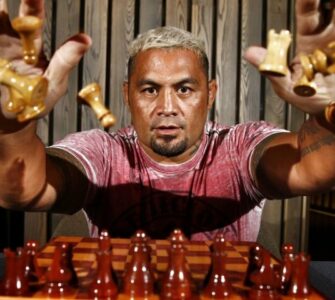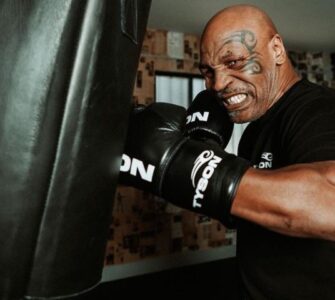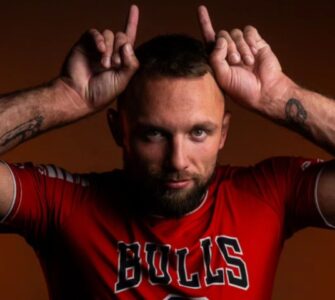The idea of being a grappling legend carries a sort of mystique. We often recall their triumphs, their battles, and the inspiring moments that motivated countless fans to persevere in their own lives. However, beneath these stirring stories lies a reality of relentless dedication and the personal toll it takes on these individuals.
Considering what it means to be a living legend brings to mind Rickson Gracie, arguably the most renowned figure in this arena. Imagine being a fighter with an unbeaten record of 400-0. At 57, Rickson suffers from eight herniated discs. Despite this well-known fact, what may come as a shock (as revealed by his son, Kron) is that he competed even with these debilitating injuries. His condition was so severe that his doctor advised against walking.
The injuries could be linked to the extreme spinal flexion showcased in the documentary “Choke,” raising questions about the price of such a storied career. Now, in his 60’s, his training is limited, often only once a week with no intensive sparring – is the sacrifice worth it?
Another Brazilian jiu-jitsu icon, Ricardo Liborio, also faces severe back issues with seven herniated discs. As highlighted by Joe Rogan in his podcast, Liborio lives with constant pain, yet he continues to train.
Dan Gable, an Olympic wrestler, has a legacy marked by extraordinary success. His high school record was 64-0, followed by 118-1 in college, culminating in an Olympic gold medal in Munich without losing a single point. Despite these achievements, his physical struggles are significant. In a 2013 ESPN interview, he disclosed having undergone eight knee surgeries and four hip replacements.
These stories reveal the profound physical sacrifices behind the glory of grappling legends.
ADCC world champion Robert Drysdale is still relatively young but he has lots of mileage in his body, and can not train or perform like he used to. In a recent episode of the Mayn Idea podcast, the legend tells us in which state he currently finds himself:
“It sucks, man, because it’s an identity crisis. It’s everything, it’s like I used to be able to mop people on the mats, now I can’t. I need help getting off my… I have arthritis on both my knees, my meniscus are gone, right? So imagine someone just put sand inside your knees and now you gotta move around with sand inside your knees, that’s how I feel, you know? I lean on the wall when I get up sometimes, you know, like… My legs don’t push me up by themselves, and I’m 42, too.”
So, yeah, I mean, it sucks. I do my best, I try to train, you know, as much as I can. I can’t perform the way I used to.
About what caused the deterioration in his body:
“I think part of the reason is, I was an idiot when I was training, too. Like, I thought he was gonna be young forever, and training six days a week, thought every round was a thousand miles an hour. It doesn’t matter who it’s against, like, could be a white belt, like I just, you know… And that, I think, made me a competitive guy. That was an asset, but it had… there’s, it was like a credit card, right, like you’re having fun with it, and then you look at the… the bill at the end, like, ‘Oh my God, did I really spend that much?’ You know, and you’re going through your statement, and it’s just like, ‘God, there’s no way I spent that much money.’ ‘Oh, you did. You did, it’s real,’ you know? And that’s exactly how I feel about my body, you know? I’m paying the bill now. I’m not happy about it. I was hoping modern technology would be moving a little bit faster than it is in the medical technology, and it’s… it’s not moving that fast. I… I’ve tried stem cells, it’s temporary. I’ve tried purp, physical therapy. I think yoga and physical therapy probably the most beneficial… that, you know. But I don’t know, man. Like, I deal with it…”
His current long term injuries:
“I have two herniated discs on my neck, one on my lower back. I have osteoarthritis on both my wrists and both my knees. So, that means I can’t pull… My hands are very weak, because I can’t do this right here, I can’t circle… not with strength. With no… no power, no strength, but like finishing a Kimura, it feels like I’m… it feels like I’m wrist-locking myself, yeah. Uh, so, very few submissions I can go for, like anything that’s hard hand fighting is very painful, very difficult. My knees are like… I can’t drive, so I’m passing guard, I have very little drive off my knees. If I’m in butterfly… butterfly used to be my main position, it’s… it’s hard to get that extension on the legs because I feel like I have sand inside my knees, you know? So, like, little things like that… So, right, um, you know, I… I work around it as best I can, man, but you know, the thing is it’s weird, man, like people don’t respect you as much either if you’re not whooping their asses, there’s that too.”
People’s expectations when they roll with him:
“It’s real. You know, it’s real. People absolutely respect you when you mop the floor with them. You put them down, like, ‘What? What?’ And then you put them down. But that slowly disappears when you can’t walk mats with them anymore. And then the question is, do you have the cojones to jump on the mats with them nonetheless, and, you know… and then… because as I get older, pretty soon my purple belts will be beating me. Right? There’s no way around it. Or do I hide behind my coral belt and I go, ‘I’m never training again.’ Well, which one do you do? Because if you train, if you train, you got… get… ‘Wait a second, a coral belt is getting mopped by a purple belt. How can he be our teacher? Maybe the purple belt should be our teacher,’ right? Because that’s how people think.”
You can listen to the whole podcast here:

